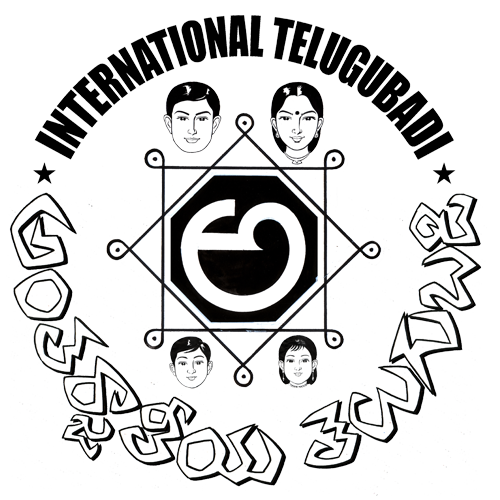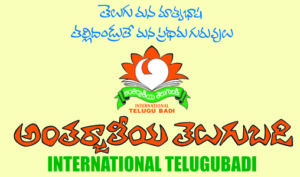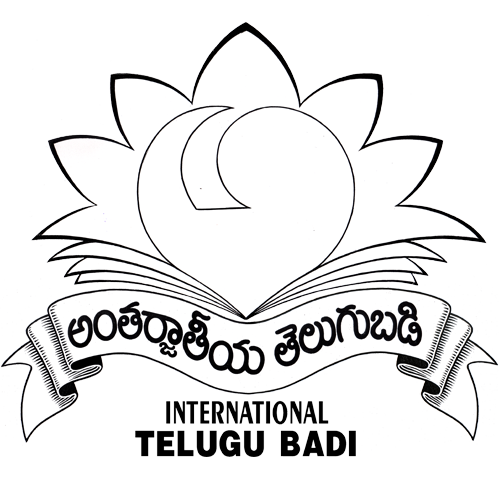Telugu Language
(Source: Wikipedia) Telugu తెలుగు, is a Dravidian language spoken by Telugu people predominantly living in the Indian states of Andhra Pradesh, Telangana and Yanam district of Puducherry, where it is also the official language. It stands alongside Hindi and Bengali as one of the few languages with primary official language status in more than one Indian state. Telugu is also a linguistic minority in the states of Odisha, Karnataka, Tamil Nadu, Kerala, Chhattisgarh, Maharashtra and Andaman and Nicobar Islands. It is one of six languages designated a classical language of India by the country’s government. Telugu ranks fourth among the languages with the highest number of native speakers in India, with nearly 82 million speakers as per the 2011 census, and 15th in the Ethnologue list of languages by number of native speakers . It is the most widely spoken member of the Dravidian language family and one of the twenty-two scheduled languages of the Republic of India. It is also the fastest-growing language in the United States, where there is a large Telugu-speaking community.
Telugu is thought to have been derived from trilinga, as in Trilinga Desa, “the country of the three lingas”. Trilinga Desa is the land in between these three Shiva temples namely Kaleshwaram, Srisailam and Draksharamam. Trilinga Desa forms the traditional boundaries of the Telugu region. Telugu has also been known as “Tenungu”, “Tenugu” and “Telungu”. Telugu is the only literary Central-Dravidian language and is heavily influenced by Sanskrit and Prakrit. It is also influenced by Urdu around Hyderabad region. Telugu words usually end in vowels which makes the language very mellifluous and sweet to hear. For this reason Telugu is known as Italian of the east. Telugu was considered most suitable for musical expression. Of the trinity of Carnatic music composers, compositions of Tyagaraja and Syama Sastri were largely in Telugu. Telugu literature goes back to 11th century A.D. Its ancient forms were attested through inscriptions dating back to 200 A.D. Roughly 10,000 pre-colonial inscriptions exist in the Telugu language. Telugu is written in the Brahmi script. Telugu retains several features of Sanskrit that have been lost in north-Indian Sanskrit-based languages such as Hindi and Bengali, especially in terms of pronunciation of vowels and consonants.
Standard Telugu is often called Shudda Telugu or accha telugu where as several dialects exist depending on the region in which the language is spoken. Onamaalu, or the Telugu alphabet consist of 60 symbols – 16 vowels, 3 vowel modifiers, and 41 consonants. Telugu has complete set of letters which follows scientific system to express sounds. Some of them are introduced to express fine shades of difference in sounds. Telugu has full-zero (anusvāra), half-zero (arthanusvāra or candrabindu) and visarga to convey various shades of nasal sounds. la and La, ra and Ra are differentiated. Telugu has .CH and .JH which are not represented in Sanskrit, and S, SH, and KSH which are not found in Tamil. Telugu script can reproduce the full range of Sanskrit phonetics without losing any of the text’s originality. Telugu has made its letters expressive of all the sounds. The primary word order of Telugu is SOV (subject–object–verb).
Nannaya’s (1022–1063) translation of the Sanskrit Mahabharata into Telugu is the piece of Telugu literature as yet discovered. Tikkana (13th century) and Yerrapragada (14th century) continued the translation of the Mahabharata started by Nannaya. During this period, some Telugu poets translated Sanskrit poems and dramas, while others attempted original narrative poems. The popular Telugu literary form called the Prabandha evolved during this period. Srinatha (1365–1441) was the foremost poet, who popularized this style of composition (a story in verse having a tight metrical scheme). Srinatha’s Sringara Naishadham is particularly well-known. The earliest Ramayana in Telugu is generally known as the Ranganatha Ramayana, authored by the chief Gona Budda Reddy. The works of Pothana (1450–1510), Jakkana (second half of the 14th century) and Gaurana (first half of the 15th century) formed a canon of religious poetry during this period. Padakavitha Pithamaha, Annamayya, contributed many original Telugu Paatalu (Songs) to the language.
The 16th and 17th centuries CE is regarded as the “golden age” of Telugu literature. Krishnadevaraya‘s Amukthamalayadha, and Pedhdhana’s Manucharithra are regarded as Mahaakaavyaas. Sri Krishnadeva Raya stated “Desa bhashalandu Telugu Lessa” meaning “Among the nation’s languages, Telugu is the best”. Telugu literature flourished in the south in the traditional “samsthanas” (centres) of Southern literature, such as Madurai and Tanjore. This age is often referred to as the Southern Period. There were also an increasing number of poets in this period popularised indigenous (desi)meters.
With the conquest of the Deccan by the Mughals in 1687, Telugu literature entered a lull. Tyagaraja‘s compositions are some of the known works from this period. Then emerged a period of transition (1850–1910), followed by a long period of Renaissance.Europeans like C.P. Brown played an important role in the development of Telugu language and literature. In common with the rest of India, Telugu literature of this period was increasingly influenced by European literary forms like the novel, short story, prose and drama. Paravastu Chinnayya Soori (1807–1861) is a well-known Telugu writer who dedicated his entire life to the progress and promotion of Telugu language and literature. Sri Chinnayasoori wrote the Bala Vyakaranam in a new style after doing extensive research on Andhra grammar. Other well-known writings by Chinnayasoori are Neethichandrika, Sootandhra Vyaakaranamu,Andhra Dhatumoola, and Neeti Sangrahamu.
Kandukuri Veeresalingam (1848–1919) is generally considered the father of modern Telugu literature.[34] His novel Rajasekhara Charitamu was inspired by the Vicar of Wakefield. His work marked the beginning of a dynamic of socially conscious Telugu literature and its transition to the modern period, which is also part of the wider literary renaissance that took place in Indian culture during this period. Other prominent literary figures from this period are Gurajada Appa Rao, Viswanatha Satyanarayana, Gurram Jashuva, Rayaprolu Subba Rao, Devulapalli Krishnasastri and Srirangam Srinivasa Rao, popularly known as Mahakavi Sri Sri. Sri Sri was instrumental in popularising free verse in spoken Telugu (vaaduka bhasha), as opposed to the pure form of written Telugu used by several poets in his time. Devulapalli Krishnasastri is often referred to as the Shelley of Telugu literature because of his pioneering works in Telugu Romantic poetry.
Viswanatha Satyanarayana won India’s national literary honour, the Jnanpith Award for his magnum opus Ramayana Kalpavrikshamu. Dr. C. Narayana Reddy also received the award for his contributions to Telugu literature. Kanyasulkam, the first social play in Telugu by Gurajada Appa Rao, was followed by the progressive movement, the free verse movement and the Digambara style of Telugu verse. Other modern Telugu novelists include Unnava Lakshminarayana (Maalapalli), Bulusu Venkateswarulu (Bharatiya Tatva Sastram), Kodavatiganti Kutumba Rao and Buchi Babu. Gunturu Seshendra Sarma, a well known Telugu poet, has been a recipient of the Sahitya Akademi Award. He is best known for his work, Na Desham, Na Prajalu (My country, My people), which was nominated for the Nobel Prize in Literature 2004. His works have been translated into many languages.
Pedda Bala Shiksha is a complete, two volume Telugu encyclopedia written by Gajula Satya Narayana. It covers Telugu grammar, Panchatantra tales, and exercises and it is used to teach Telugu to children. In tune with the changing times, places and ambitions of Telugu people, International Telugu Badi and International Bala Siksha are born to encourage Telugu Learning & Teaching with the use of modern tools, processes and content on world canvass.


